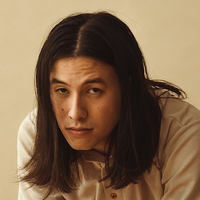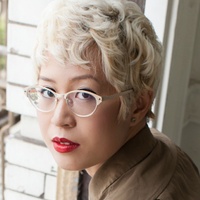On making an online exhibition useful
Prelude
Amanda Contrada is a Brooklyn-based curator, producer, and project manager working in art and music. She has produced exhibitions including Rammellzee: Racing for Thunder and Bjarne Melgaard’s The Casual Pleasure of Disappointment at Red Bull Arts New York as well as curating and overseeing contemporary art performances and installations at cultural events including Material Art Fair, MUTEK, among others.
Terence Trouillot is a writer and editor based in New York City. He is a contributing editor at BOMB and has written about contemporary art and visual culture for magazines including BOMB, Momus, The Brooklyn Rail, The Village Voice, Arts.Black, Artnet News, Art in America, Artforum, art-agenda, and Eye on Design, among others. He is currently an associate editor at frieze.
Conversation
On making an online exhibition useful
Curators Amanda Contrada and Terence Trouillot on the challenges of organizing an online exhibition and how collaboration helps broaden and deepen ideas.
As told to Amanda Contrada & Terence Trouillot, 3467 words.
Tags: Art, Writing, Collaboration, First attempts, Inspiration, Money, Politics, Beginnings.
Amanda Contrada: So how do you want to start?
Terence Trouillot: I think it would be interesting to start with the genesis behind [our exhibition] ALFI [“A Language for Intimacy”] and talk about the process of building it, both individually and collectively—how we both came at the project and what that process looked like for both of us. I’m wondering if you could talk about what sparked this idea for the exhibition for you, and the process that led us to working together on it.
AC: This question of intimacy was something I started thinking about pretty early on, when COVID-19 hit. I was thinking a lot about how we relate to other people and how we feel comfortable—or not—in the world, while we were all experiencing this dramatic change. This was probably a couple of weeks in, when people still thought that this shutdown was going to be over in a few weeks.
But at the same time, it was very much a moment when people were massively freaking out..You went out and you walked down the sidewalk and would physically cringe away from other people. I would walk down the street and just get really upset if someone came within a six-foot radius of me.
It made me wonder how we were conditioning ourselves to be afraid of intimacy and proximity. There’s the idea that if you do something multiple times and it creates these new patterns in your behavior and new neural pathways and those things stick. So the question came up of “how is this going to impact how we relate to each other in the future?” I was talking to a friend on the phone about it and she said, “It’s a trauma. It’s a question of recovering from that trauma of holding yourself back from other people and from that intimacy of proximity.”
I wasn’t seeing a lot of editorials about it. I was talking to some friends about it but it was kind of like those early pandemic conversations that you would have with people where you were on the one hand talking about your mental health and these very personal things, but it was also becoming these canned conversations because you were having the same conversation with everybody. The idea then was, how do I create this conversation and feel like I’m not just having it in my bubble? My practice is in art and music, and in curating and programming. So this idea of doing a group exhibition where you can look at these very evocative images that tie into that concept of intimacy came about. Curating in this way is a very different thing than what I’ve done in the past, though.
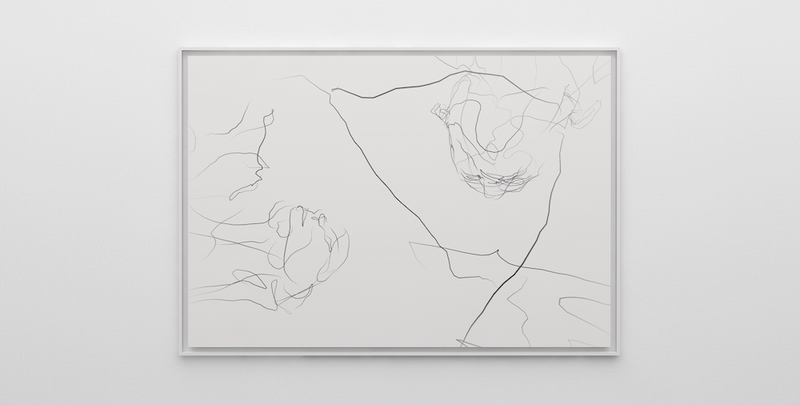
Sougwen Chung, Corpus V, from the series (distance) in place, 2020, graphite on paper, collaboration with D.O.U.G._5. Image courtesy of the artist
Typically I’ve done things where it’s either more straightforward, where the creative and intellectual process rests largely with the artist. This exhibition and its process was way more about putting my brain out into the world, which is terrifying and something that I didn’t really want to do alone. Both because that’s a scary thing to do alone, and also because we were in this weird, crumbling world and I wanted to have some accountability. I wanted to have someone to talk to about it.
You were someone that I felt like I could do that with, and that you would bring something different into the mix as well because we have very different backgrounds. I had also been thinking about how this exhibition was going to be digital. This is not going to be in real life. What needs to happen to make it more engaging? What do you have to bring into a digital exhibition to compensate for the loss of the physical experience of being inside a gallery or museum?
So that merited some attention especially, and is something that I think you really helped bring to life in this project. The idea of pairing the writers with the artist was something that you brought to it, which I think is really important. I would love to hear what you thought when I brought this up to you, and how bringing the writers in and doing it in that way with those pairings kind of evolved.
TT: Yes. Totally. What’s interesting to me is that I came into this being like, “I’ve never curated anything before, let’s see how this works.” I’ve worked as a curatorial assistant on a few projects in the past but nothing where it was super hands on like this. Also, again thinking about it as an online exhibition was a completely different and new thing as well.
When you came to me with the idea, I remember you were inspired by this book Carnal Hermeneutics (Richard Kearney & Brian Treanor, 2015) and wanted to couch the exhibition in this very theoretical framework And I remember we wrestled with that. I think for me, it was also, at least toward the beginning, and even throughout the process, this exercise of hammering down what the concept behind the exhibition would be. I remember having conversations with you about it and trying to find a through line between the text you were reading and what the exhibition would be like.
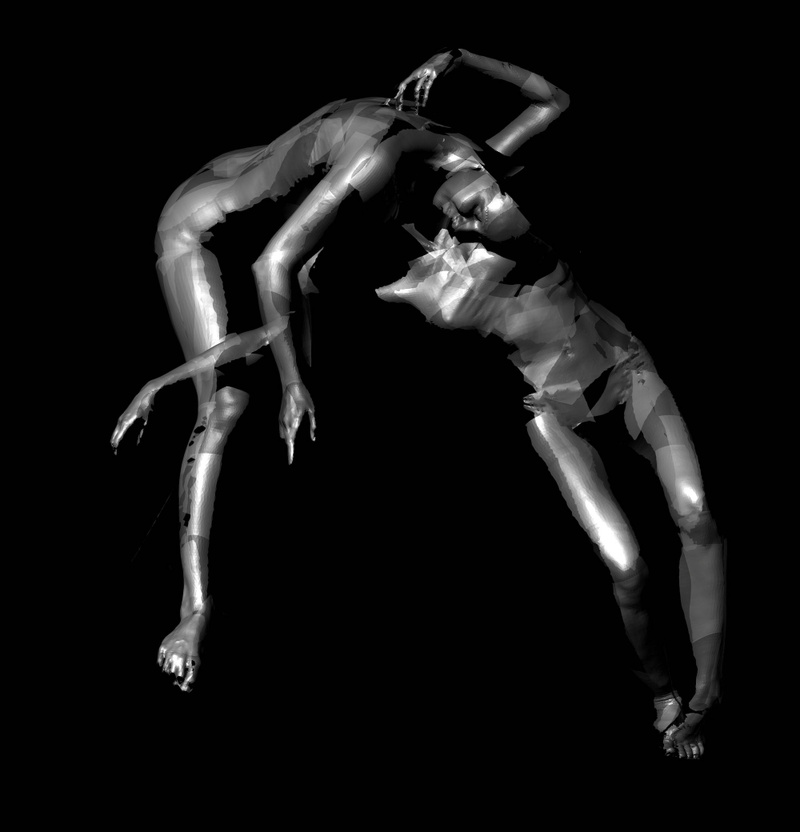
Sophie Kahn, Untitled VI.I from the series The Divers, 2019, archival chromogenic prints. Image courtesy of the artist.
And, to answer your initial question, how did this idea of including writers and pairing them with artists come about? My real reasoning behind it, apart from also thinking of writers in this moment, particularly art writers who needed support, but it was also a reaction to what other venues were doing with the online-exhibition format. And these, aside from the overall theme of the exhibition, were the questions we were asking ourselves: How to make an online exhibition engaging? What makes one online exhibition more engaging than others?
I remember seeing, or getting an email from, I don’t remember the name of the gallery or who put it up. It was something where they were exhibiting these works but also having these essays alongside of them, and I was excited about the idea. That’s way more interesting than some of these other online exhibitions I’ve seen so far. And I remember seeing the exhibition and it was just like every other one: totally drab. It was just a press release and images on the site. And the essays were just longer captions to the work, which is fine but it wasn’t what I was expecting. My reaction to that was that I wanted something meatier, or the writing to be a little bit more substantive and interesting. But then it related to this overall thing, yes, we want to create a platform to support these folks. That really was the glue that inspired both this idea of having artist and writer pairings, and having that intimacy between them. But it also fed into the overall concept. That part was really interesting, that the development and the process just informed the concept as well, which I thought was neat.
AC: I think this project evolved a lot. That’s something that wouldn’t have happened if we weren’t doing it collaboratively.
TT: Sure, absolutely.
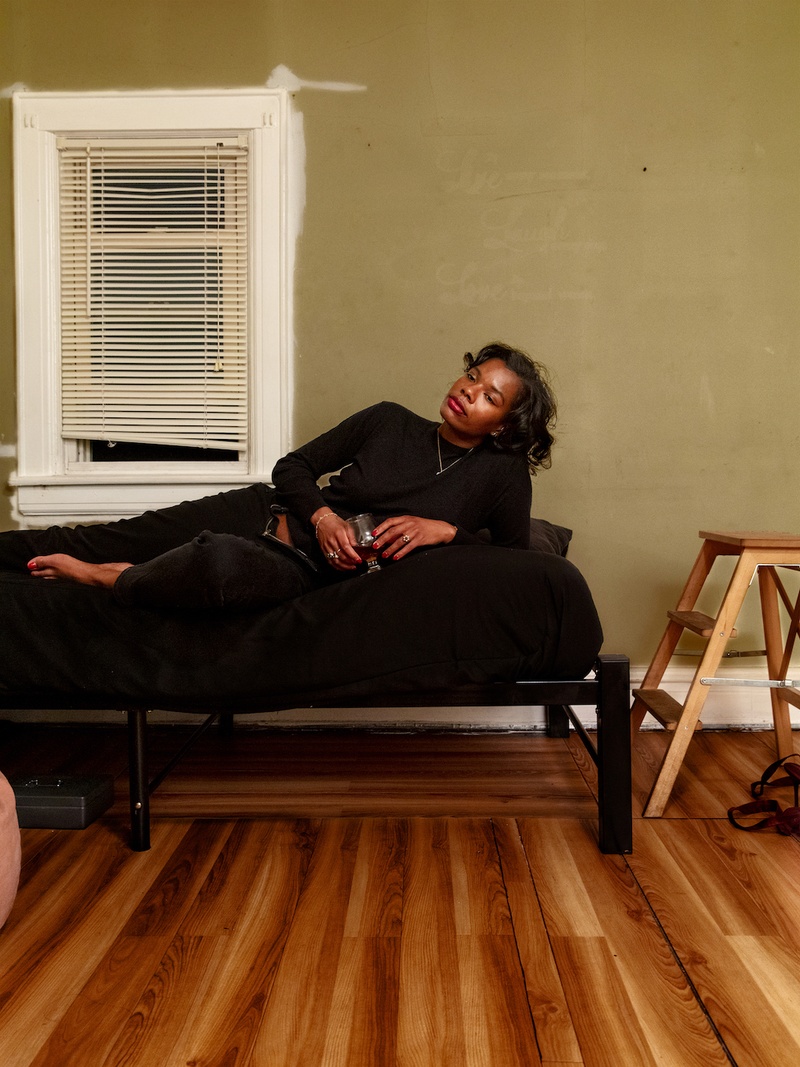
Elliott Jerome Brown Jr., Not yet titled (After Live, Laugh, Love), 2020, photograph. Image courtesy of the artist.
AC: I tend to settle on a thing, ideally through some educated research and then that’s the thing. Even if things aren’t lining up 100%, it’s hard for me by myself, even if part of my brain recognizes that, to let go of this initial direction. I think that having conversations made it easier to see when certain things didn’t really make sense anymore. We were talking for a while about things being much more tied to the question of “How are things going digital? How is intimacy going digital?” and all this stuff. That really didn’t seem necessary anymore. But I think that having it as a collaborative process makes it easier for us to let some things go and also to just talk through certain things as well. You’ve read the Public Assistants’ mission statement, right?
TT: Yeah, totally.
AC: One of them is “Necessity is the mother of invention, and Public Assistants is its daughter.” It’s also something that my mother used to say all the time. She will get a kick out of it anytime I allude to her having a pearl of wisdom. But the whole “necessity is the mother of invention” thing, and I think that there was just a dearth of good, digital, cultural content—especially at the outset of the pandemic. Like truly deep and engaging and not just like, “We’re going to put this in-real-life experience on the internet in photos and call it a day.” I think that idea was really motivating for both of us to do this as a wish fulfillment: This is what we want. This is what would engage us.
TT: Yeah, because of what we were reacting to and what was available to us, we were relegated to working on a digital platform. But in a lot of ways, it gave us a lot of freedom to try new things and think about it differently, which I thought was a big, fun part of it.
I think another takeaway from the collaborative process—which you touched on earlier—is that it really helped manage our expectations and how to work around what we pictured in our own heads and what is actually feasible. That goes from thinking about the design of it, which we could talk a little bit later. But also because we’re two different people, we both have different ideas of what it could look like. Then coming together and working it through and settling, or not necessarily settling, but agreeing on what makes the most sense. Again, bringing it back to reality and talking it through and seeing what was possible and what makes more sense in the situation.
But I also think we complimented each other pretty well. It was important, I think, to have things that obviously you were better at than I was and vice versa to make things happen, otherwise I think it would have been very, very difficult to move on from just the concept. So just tapping into each other’s networks and stuff like that. Obviously at some point a lot of those networks intersected because we know the same people. But I’m also just grateful that we had that opportunity to use what we could bring to the table in a way that actually meshed pretty well. I think it was a good yin and yang in that respect. That was super important for my ability and just getting this exhibition off the ground. Because otherwise if we were both really good at the same things and both really bad at the same things, I don’t think it would have gotten off the ground.
AC: Or at least it would have been a completely different thing.
TT: Yeah, it would’ve been very different from what it actually ended up being. I think the process of coming up with the final list of artists was the most challenging.
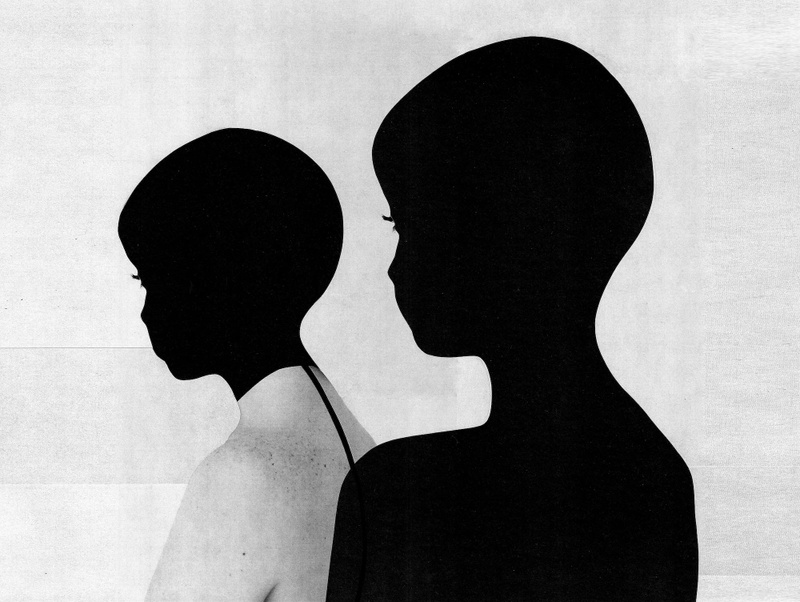
Jesse Draxler, Living with a Ghost, 2017–2020, analogue collage and acrylic. Image courtesy of the artist.
AC: At the beginning there were some artists who we were considering before, who were maybe a little bit outside of our network—ones that we found were interesting, but maybe were not within our community. This is also something that really came to the forefront as the exhibition developed and just as the pieces came together, but also as again, the world politics shifted and refocused so heavily on this idea of intimacy with community.
What’s really interesting with this show is that most of the writers and the artists don’t know each other. I felt like in some ways the intimacy was created, at least for me, with all of these artists, since talking to them about the show was very personal—more than it’s been when I’ve worked with artists on any projects in the past. I think that’s partially just due to the theme. I think when you’re talking about intimacy, it tends to generate intimacy.
TT: That is the little secret of the exhibition that in and of itself is already a practice around intimacy. But one of the things that I learned from this experience was that intention was a big part of the conception of this exhibition. Another side to it, which I thought was an important part of the process and something that we talked about from the beginning, and in some ways was the cornerstone of the show, is that we were thinking of it as a platform to support artists and by proxy in this situation, writers as well. Thinking about what was going on with the realities of COVID-19, it was important for both of us to create a platform that was supporting creatives either furloughed from their jobs, or were feeling the financial burden that was created by the pandemic, including you and myself.
These are the folks within our communities that we want to support and create a place that not only is exhibiting or presenting their work and supporting their creative output, but also paying them for it as well. That was also something we really agreed upon immediately: we need to pay these folks. We needed to raise funds in order to do so, and this show was contingent on that.
The other thing I wanted to talk about was how difficult it was just to find the designer. It was really important for us to create something that was specific to the medium, and so creating a sound website was key. We had a budget but we didn’t have a very big one. Obviously doing something like that, which I later learned because as you know, I was trying to design the website on my own with very little knowledge and experience in web design, is incredibly time consuming and difficult. I found myself obsessing about this, and really thinking about how it was going to look. I realize now, that if I had to do it all over again, having a designer and developer is essential from the very beginning. Luckily that did happen at the end, but it took some time to get there.
But I will say, because I spent so much time trying to figure it out on my own, I really got a sense of what that work really means, and how involved it is and thinking about this design and within the concept of the exhibition: How to make the design fit into the concept of intimacy was really interesting.
AC: Yeah. The design was a race to the finish to get the show up! I think that the timing was so arbitrary on the one hand, with the deadlines we imposed on ourselves, but it still worked out perfectly because I feel like as this show is coming down, things are more and more reopening. And obviously this show will resonate whether things are reopened or not. But I I think that having it bridge that more shut in quarantined sheltered place life to now, when people are pretending that we have herd immunity and that things are normal, has been a good time to do it. But yeah, I do think that it was a challenge, man. Especially at the beginning when we were trying to lock in funding and we’re like, it’s going to be this date. And then things lag and keep getting pushed and we’re just like, nope. Not that date.
TT: Yeah. I’m glad. I think one of the things I was also really happy with was how we still gave room, magically, for the artists and writers and ourselves to have to think about the issues that were affecting our world following the death of George Floyd. I don’t even know how it really happened. But we allowed everyone to take a step back and rethink whether they wanted to commit to this project. Obviously folks were both sidelined by the news and going to protests, and it was important to open up the conversation and whether this was the right time to go on with his project. I’m very happy we did that, and in the end everyone was onboard and the exhibition grew as a result.
AC: I mean, it reframed it at the very least.
TT: Yeah, exactly. And I think we lucked out in that regard. It didn’t derail us from actually finishing or getting it off the ground. And we were fortunate that the exhibition was nimble enough to also speak out on those issues in some shape or form. I thought it was important actually for us to think about that and obviously reposition and reframe some of the show as a result of what was going on.
AC: Me too. I think that was also for me definitely a moment where if we had not been doing this collaboratively, I would have felt way more out at sea just in terms of what my place as a white, female curator would be in that moment. Both in trying to get things out of artists and writers who are largely people of color and also just in terms of presenting something with that narrative.
TT: Totally.
AC: That was definitely a huge moment for me where I was very happy to be able to ask how are you feeling about this? And let you lead that because I just didn’t feel like it was really my place to do more than help provide the platform. Because again, this exhibition was something where the curation of it and of the curators felt way more out in front than in anything else I’ve ever done. So yeah. I think that would’ve been something where I would’ve had a lot of doubts as to the appropriateness if I were doing it solo.
Amanda Contrada Recommends:
Music: I’ve had a really hard time with music during the pandemic. A big part of my relationship with music is based on physically experiencing it in a space, and without a good home sound system it’s been difficult to feel fully engaged and get the sense of catharsis that I look for in music. That being said, here’s some of what I’ve been enjoying recently:
Ikonika - Hollow EP
Tzusing / M.E.S.H. split
MC Yallah - Kubali
Kelman Duran - pretty much everything of his but especially 1804 Kids
Books: A couple of these relate to that question above of music as a somatic experience:
Sonic Warfare - Steve Goodman
Listening Subjects - David Schwarz
Doce Cuentos Peregrinos - Gabriel Garcia Marquez
The Sandman - Neil Gaiman
Art: I’ve been biking around the city to see public art, since it’s a pretty perfect social distancing / outdoor activity. Some things I’ve seen recently and loved below (public art, exhibitions, general things I’ve seen in the world):
Chloë Bass - Wayfinding
Joiri Minaya - I’m here to entertain you, but only during my shift
Akeem Smith - No Gyal Can Test
Jordan Weber - “kNow Space” works
Rashid Johnson - all the “anxious” works
Terence Trouillot Recommends:
Music/Podcast: I’m terrible at listening to music. All I’ve listened to this year is DaBaby, Radiohead, ’90s R&B, and NYT’s The Daily. I’m completely unimaginative in this department, sadly.
Books: Ottessa Moshfegh’s Death in her Hands, Raven Leilani’s Luster, Frank B. Wilderson III’s Afropessimism, Nicole R. Fleetwood’s Marking Time, and Legacy Russell’s Glitch Feminism.
Movies: Garrett Bradley’s Time, Steve McQueen’s Lovers Rock, Bill Gunn’s Personal Problems (on Criterion if still there).
TV: Lovecraft Country… That’s it honestly right now.
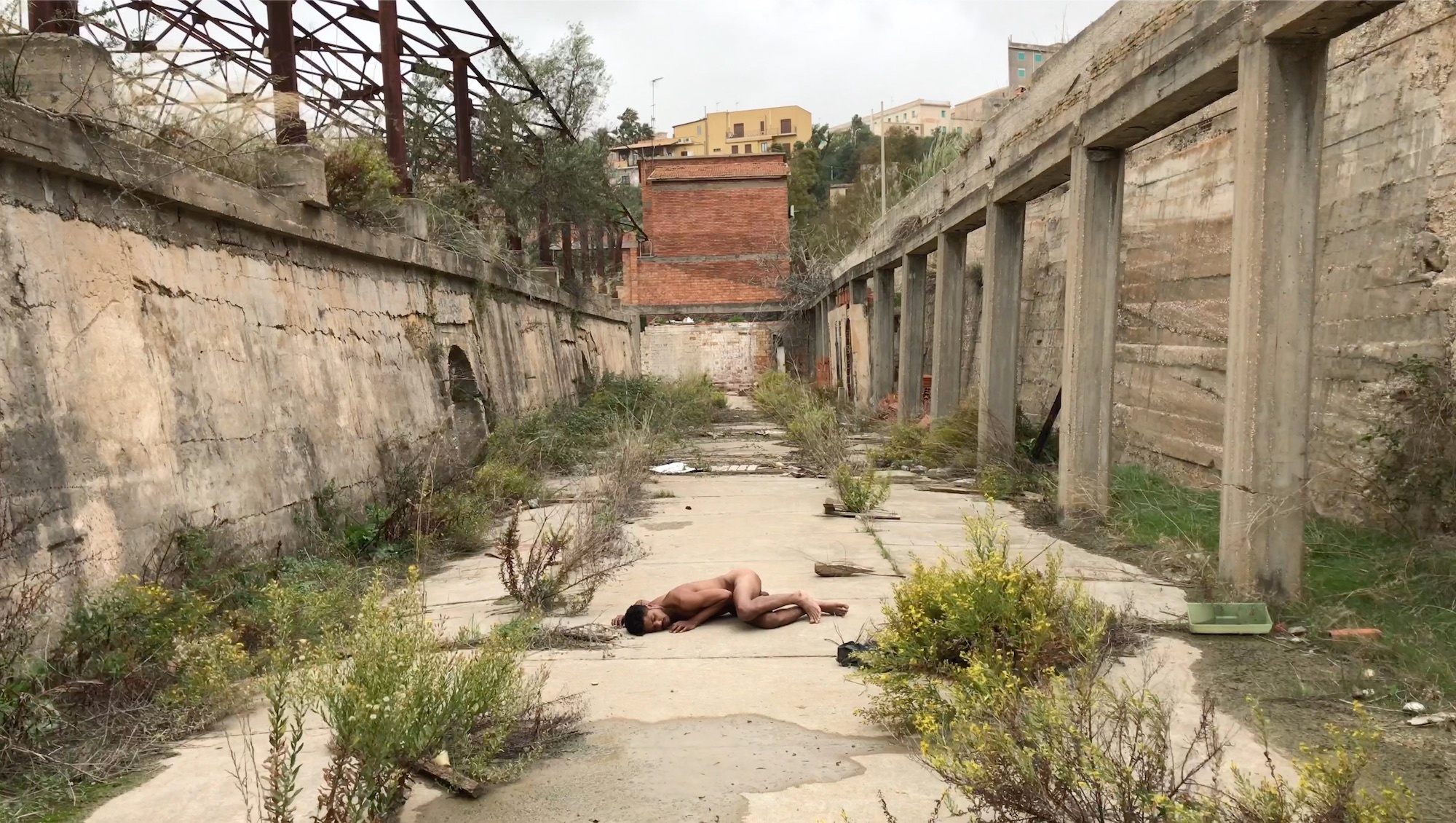
DonChristian Jones, Factory, 2020, still image from The Politics of Mourning I, a series of site specific performances in Southern Italy and along the coasts of Sicily. Image courtesy the artist
- Name
- Amanda Contrada & Terence Trouillot
- Vocation
- Curators
Some Things
Pagination
